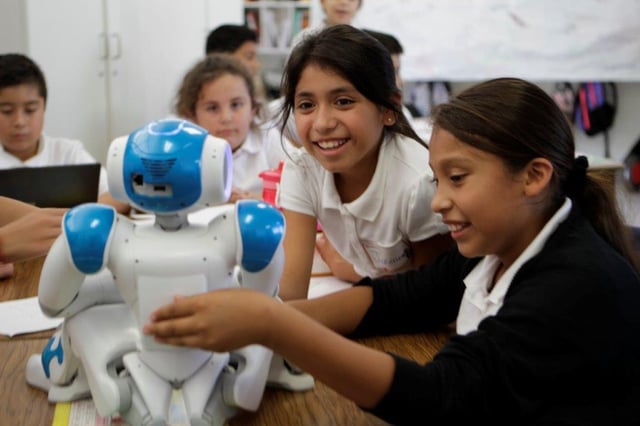
The Four C’s have created quite a buzz in the last few years in education. The four C’s consist of Creativity, Collaboration, Critical Thinking, and Communication. Each has a very unique and powerful aspect, and some might say that one is more important than another. We will discover each of the four C’s and why teaching the 4 C’s is important to prepare our students for the 21st century workforce.
Creativity
Let’s take an example in a Math class. For so long Math has been taught in a way to give a strict question and have the student come up with one answer. There are very specific 1, 2, 3 steps and a rigid guide on how-to. The first C represents the opposite of this, which is Creativity - thinking outside of the box. Being inspired to come up with more than one solution to a problem which allows students to approach it in multiple perspectives.
Collaboration
Let’s take a group presentation in a History class.
For students to prepare the presentation, they have to manage and assign roles for each team member, each one should finish their work on time, schedule meeting times outside of class to discuss their progress.
Working together as a team allows for multiple inputs and ideas as they build ideas on top of others, and aids them to tackle a challenge as a group versus on their own.
Critical thinking
In a science class, many times the students need to find a pattern of events in nature. Students can pick one strategy to express the pattern, e.g., using a table, drawing, writing in a sentences or graphing. They can discuss each strategy’s cons. and pros. and argue which strategy is better than another for a unique circumstance.
Communication
In a class where students have to debate a certain topic, students should create a space for each other to voice their opinion and for other students to share their constructive feedback. The way they communicate has a huge impact in the overall results and outcome of this type of situation. Hence conflicting viewpoints are inevitable and are welcomed to attain the most effective result.
Why are they important?
In today’s market, the workplace requires competencies different from what it was in the past; 65% of students will have jobs that don’t exist today, according to the U.S. Department of Labor report. Jobs have evolved into a more interactive way of communicating and also requiring critical thinking to resolve challenges that had never even existed before. As technology progresses, and access to the rest of the world becomes more attainable, it is unavoidable that people will have to communicate with others with diverse cultural backgrounds within the workforce. Enforcing the four C’s will better prepare students for tomorrow’s jobs as having proficient reading, writing and math skills won’t make the cut. There is now a huge emphasis on employees to think creatively, to problem solve (with minimal supervision), to collaborate and be able to communicate effectively.
In our experience working in education for the last decade, we have come to the conclusion that in fact all of these 4 C’s are vital to students’ success. These skill sets can equip our students not only for their future in the workforce but also outside in their daily lives. They can apply the creativity, collaboration, critical thinking, and communication from a simple event to a life-changing decision.
Check out our products to prepare your students for the 21st century workforce.


